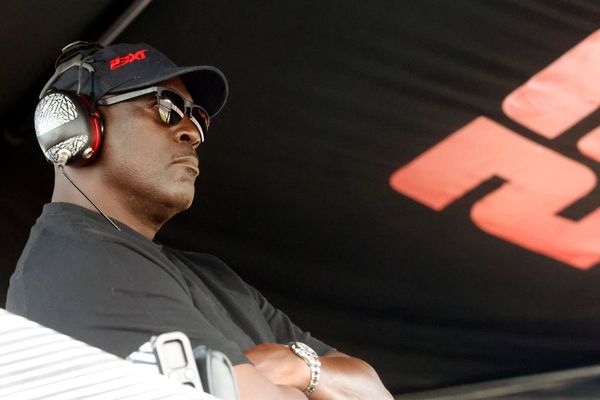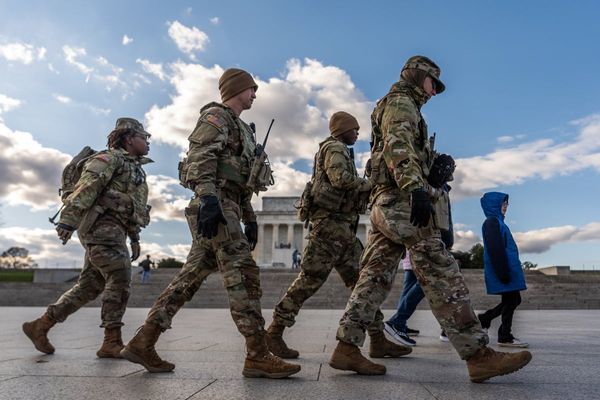
Across Alaska’s rugged, diverse and sparsely populated terrain, one sound can be heard almost anywhere: the distant drone of an aircraft. Only 20% of the state is accessible by road, and dozens of its remote settlements, predominantly Alaska Native communities, rely on aircraft for essential services including mail and groceries, medical care and emergency transport.
Since the first mail-delivery plane took off in 1924, small aircraft – capable of landing on short runways or on natural features like tundra, beaches, water or snow – have played a critical role in Alaska’s development. Today, flying is part of Alaska’s culture: one in every 78 Alaskans is a pilot, six times more pilots per capita than anywhere else in the United States.

A group of pilots fly in formation down the Knik River Valley near Palmer, Alaska. Social flights like these are a way for newer pilots to learn from more experienced friends.
Growing up in Anchorage, Alaska’s largest city, my family’s airplane was a vessel to the wilderness. My father flew, my mother co-piloted, and my brother and I sat squeezed into the back. From the cabin window, we looked down on to glacial mudflats latticed with silty, turquoise rivers; stratovolcanoes steaming into the clouds; sharp-toothed mountains and wide rolling tundra and every kind of shore.
Like most pilots we knew, ours were tiny, single-engine aircraft built between the 1940s and 1970s, modified and passed between generations of pilots over time. Flying was how we got to where we were going – to camp or hike or access places off the road system – and it was how we got home. But outside of our Anchorage community, I knew flying was a lifeline.

Jamie Klaes, 41, with her Cessna 182 in Anchorage, Alaska. Originally from Bettles, a small village 35 miles above the Arctic Circle, Klaes says that growing up, flying was as normal as driving a car – essential for everyday errands like getting groceries or going to a doctor’s appointment. Today, she teaches intensive aviation courses to rural Alaska youth.
Alaska is predominantly wilderness, but people have lived here for about 15,000 years. There are 11 distinct Alaska Native cultures, including 229 federally recognised tribes. People live, still, in small villages on the shores of salmon-bearing rivers, on the ocean coast, in the heart of caribou tundra far from any road – places where people can still subsist largely off the land and sea as their ancestors have.
Aside from barges that use oceans and rivers as transportation corridors, bringing large supplies of goods and fuel in the summer, all access to essential services for most communities is by airplane. Planes landing in small villages are met by locals with ATVs, snowmobiles or trucks pulling trailers for the cargo, groceries and mail that the pilots unload. Planes respond to medical emergencies, transporting life-saving medical personnel and evacuating people in need from the most remote parts of the state.

A pair of airplanes fly in formation over the ice near Knik Glacier, Alaska.

Dolena Fox, 25, with a Cessna she flies as a flight instructor in Palmer, Alaska. Originally from Kipnuk, a small village in the Yukon-Kuskokwim Delta, Fox is the only female Yup’ik commercial pilot from her region.
Throughout my life, I have known flying to command attention to safety and a deep respect for the land, weather and the lives of the people onboard. Yet despite its prevalence, flying in Alaska is frequently romanticised as a dangerous endeavour. The early era of bush flying between the 1920s and 1950s remains famous for the first bold pilots who flew without weather forecasts, navigational technology or runways – and who therefore took risks with the weather, survived repeated crashes, and were often stranded alone in the wilderness. Although the safety of modern aviation has progressed dramatically since that time, the idea that flying in Alaska is dangerous still lingers, to the disparagement of professional and private pilots who devote their flying careers to operating safely.


Pilot Mary Creighton, 35, and Pilot Phyllis Tate, 82.
When I began making pictures about Alaska’s aviation culture, it was in part to challenge these outdated stereotypes that bore little resemblance to the aviation culture I had been raised in.
Over several months, from Anchorage, to the Arctic, to the Yukon-Kuskokwim Delta, I met pilots who had been part of the Alaska aviation community for decades, as well as new pilots who dream of shaping its future. I met search-and-rescue pilots, pilots who use their airplanes for subsistence, and pilots who used their airplanes to run businesses in rural parts of the state. I met pilots who connect remote communities, flight instructors training the next generation of Alaska Native pilots, and a community of female aviators who welcomed me in, and encouraged me to learn to fly.

A river winds through the winter landscape of the Yukon-Kuskokwim Delta. Forty-nine small villages spread across the delta, primarily Yup’ik and Athabaskan, rely on aircraft for most essential services. The only alternatives include time-consuming travel by snowmobile in winter, boat in summer, or driving on the frozen rivers.

Pilot Arthur Abalama, 31, flies his Super Cruiser along his trapline near the Kilbuck mountains. Originally from the village of Quinhagak, Abalama is now the chief pilot for Renfro’s Alaskan Adventures, an air charter service in Bethel.

Newtok village agent Jonah Ayuluk chats with pilot Miguel Paez as they unload freight from a Cessna Caravan. Newtok, a small village of about 350 people, is one of many Alaska Native villages that rely on air transport for essential services like groceries.

Kristin Knight Pace, a writer and former long-distance dog musher living in Bettles, Alaska. Because Bettles isn’t on the road system, her 1946 Stinson Voyager airplane was the family’s only vehicle.
Flying, I learned, is not about airplanes. It’s about what you can do with them; it’s about what flying teaches you. As the aviation industry undergoes rapid changes with skyrocketing insurance costs, advancements in electric aircraft, and the recent approval of cargo drones, the future of flying in Alaska is unknown – but so much of it starts with, and is for, the people who live here, and who always have.

Tosha Cypher, 38, prepares her 1956 Piper Pacer in Hatcher Pass, Alaska. Originally a helicopter pilot, Cypher now flies her Pacer in the backcountry with a growing community of female pilots in the Matanuska-Susitna Valley.

Glacier pilot Leighan Falley, 41, waits for fog to lift in Talkeetna, Alaska. Falley, who spent nine years guiding climbers on Denali, flies primarily in the Alaska Range for Talkeetna Air Taxi.

The peaks of the Alaska Range are framed by the window of a Cessna 182 flown by glacier pilot Leighan Falley. “You can only have reliable intuition when you’ve had enough experience. To have interacted with the environment in subtle ways that change, like subtle tacit memory in a very new environment, changes the way you behave”.
• The headlines and photos in this essay were amended on 22 May 2023 to remove the suggestion that the project only covered female pilots.







